The Nazca Lines
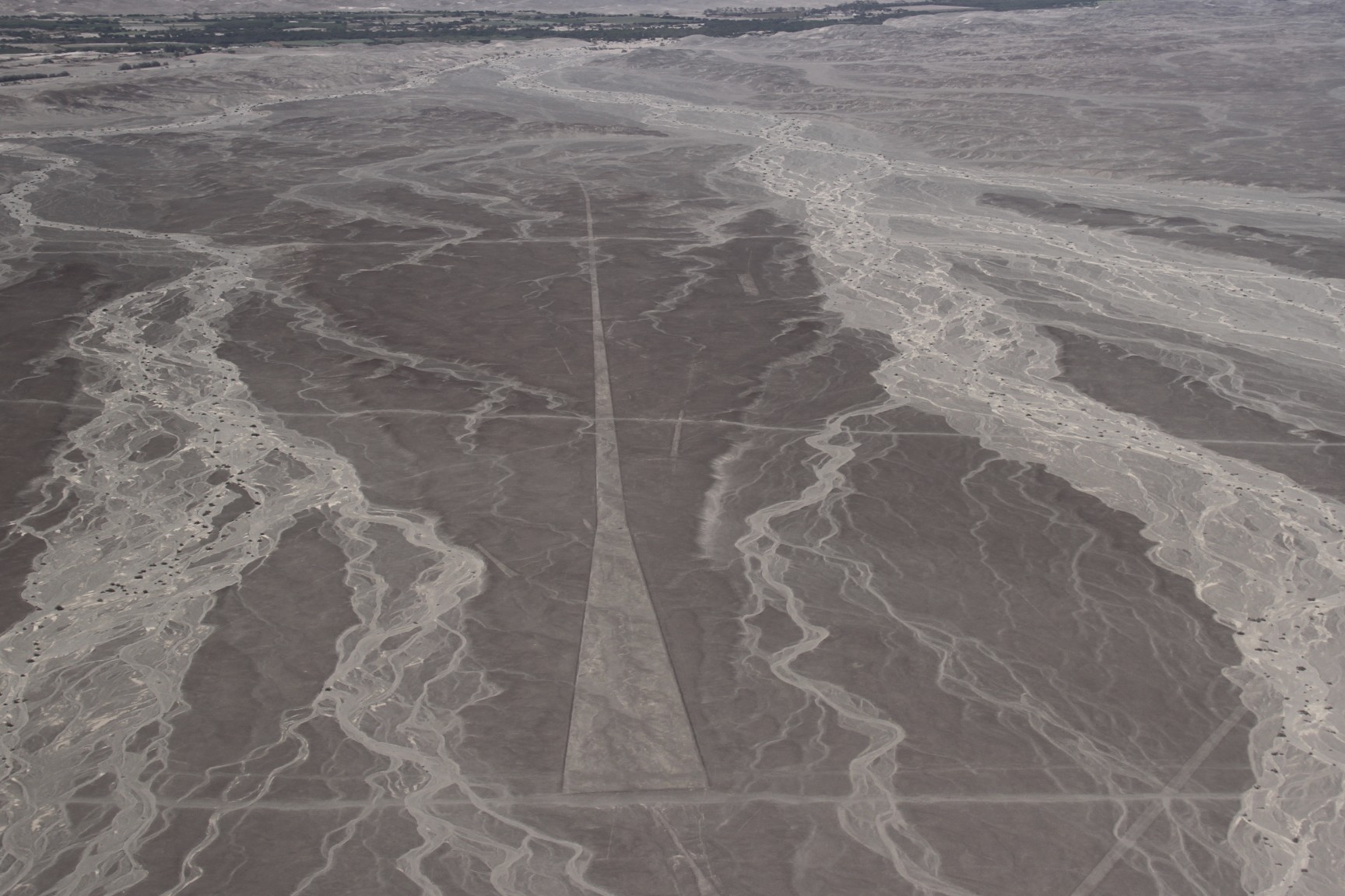
The Nazca Lines are perhaps the most famous geoglyphs on Earth. They were discovered in the Nazca desert, an arid plateau that stretches for about eighty kilometers between the cities of Nazca and Palpa, in southern Peru.
There are more than 13,000 lines that make up more than 800 designs, including stylized outlines of animals common in the area.
The geoglyphs are believed to have been traced during the flowering of the Nazca Civilization, between 300 BCE and 500 A.D. by the population that inhabited the area, even though this theory has major flaws that will be discussed below.
The lines are drawn by removing the stones containing iron oxides from the surface of the desert, thus leaving a contrast with the lighter gravel below. However, there are some lines that were dug much deeper, not just by removing stones but actually digging into the land, sometimes even removing entire portions of a hill.
The Nazca plain is not windy and the climate is quite stable so the giant designs have remained intact for hundreds of years.
Theories and Interpretations
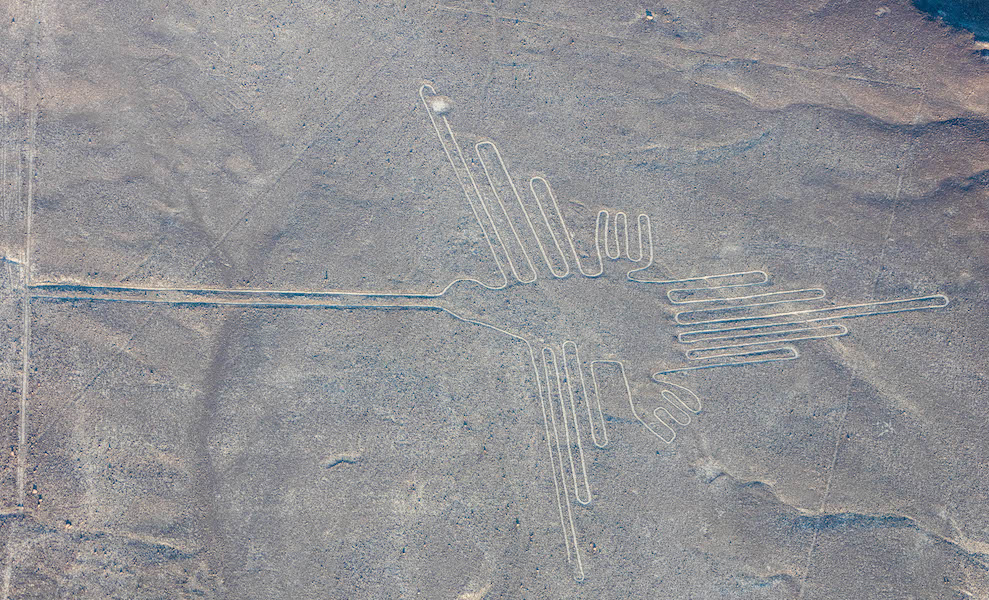
Due to the superimposition of the motifs, it’s quite safe to assume that they were made in two successive stages: first the geometric designs and then the figures.
Nevertheless, due to the characteristics of the soil, it is very difficult to be able to date with certainty the period in which they were built, especially due to the difficulty of applying the dating system with Carbon 14, which did not give satisfactory results.
At the edge of the Palpa, archaeologists have discovered the ceremonial city of the Nazca, Cahuachi, from which the makers of the lines are believed to have come.
The Mythological Hypothesis
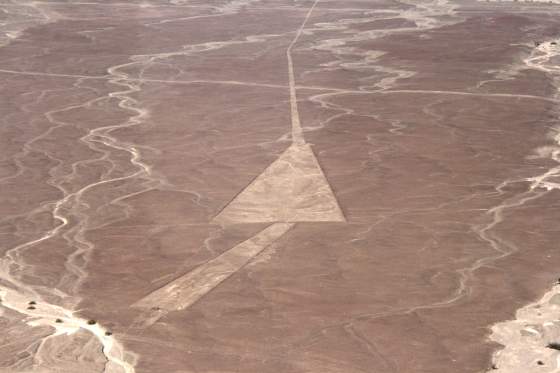
Although the lines are all really complex, the most enigmatic ones are the geometric shapes and patterns.
As a matter of fact, several researchers believe the exact opposite of the official explanation, which is that the animals and the anthropomorphic figures were drawn by the Nazca people, while the geometric patterns were made much earlier by a yet unknown civilization.
Through ancient beliefs and folklore coming from ancient oral traditions, the Inca themselves maintain that the first lines were created by Viracocha/the Viracochas, the mythological creator/creators of the world (in some accounts there’s only one, in others, there are more Viracochas).
This hypothesis was studied by the zoologist Tony Morrison along with Gerald Hawkins. In his 1978 book, Pathways to the Gods, Morrison quoted a passage written by the Spanish magistrate Luis de Monzon in 1586, regarding the stones and ancient roads near Nazca:
«The old Indians say […] that they possess the knowledge of their ancestors and that, in remote times, that is, before the reign of the Incas, another people called Viracocha came; they were not numerous, they were followed by the Indians who came on their advice and now the Indians say that they must have been saints. They built for them the paths we see today. “
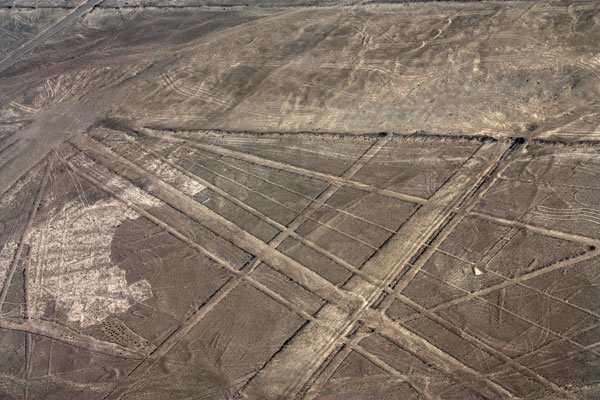
Morrison believed he had identified the key to explaining the mystery of the Nazca Lines with the story of the legendary hero-master Viracocha, also known as Quetzalcoatl and Kontiki, whose return was still awaited at the time of Cortés’ landing.
The “ancient Indians” drew figures because they thought that Viracocha would return, this time coming down from heaven, and the drawings, therefore, represented signals.
Knowing this, it’s fair to say that the famous figure called “The Astronaut” is actually waving to welcome the return of Viracocha, who would descend from the sky.
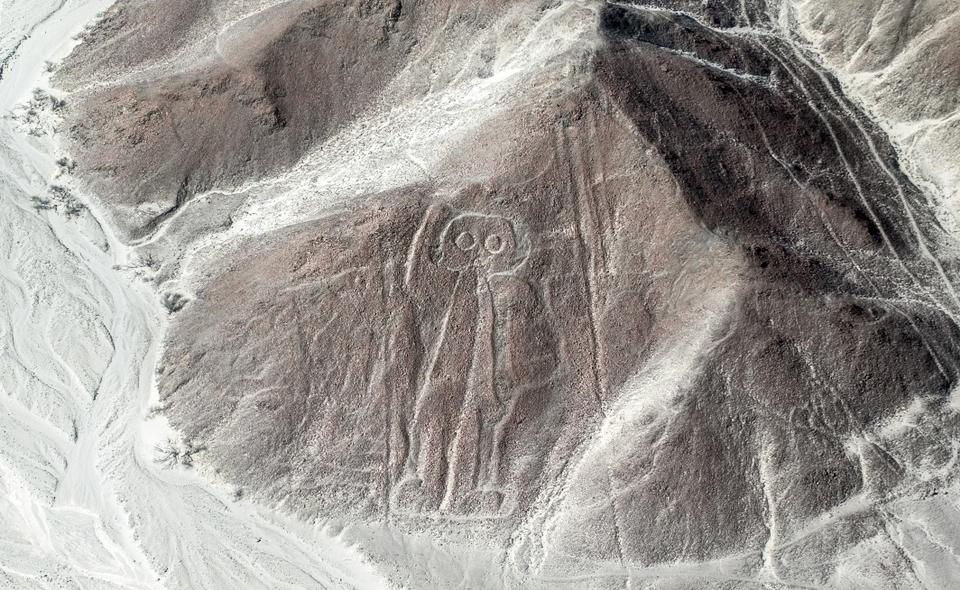
The Peruvian historian Maria Rostworowski de Diez Canseco also studied the lines interpreting them to signal to the god Viracocha.
According to Rostworowski, each figure would correspond to a clan (ayllu) of the worshipers of Viracocha, who would draw lines to indicate to their god the place where they were when he returned.
Astronomical Hypothesis
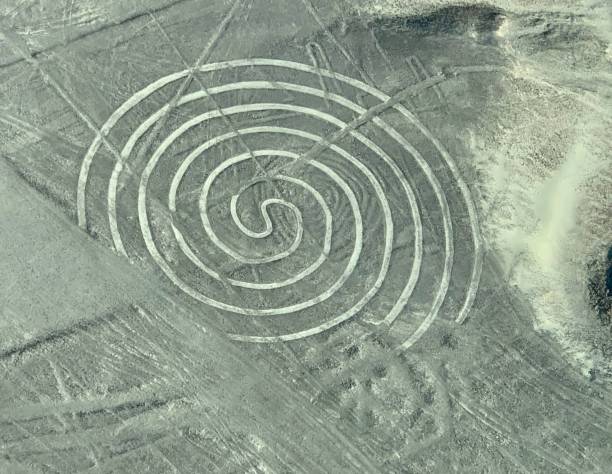
German archaeologist Maria Reiche made a decisive contribution to the study of the Nazca lines.
She devoted herself to the study and restoration of geoglyphs and the discovery of some that were never documented before.
Reiche assumed that the lines had astronomical significance, identifying the figure of the Monkey with the Big Dipper, the Dolphin and the Spider with the Constellation of Orion, etc. Reiche also claimed that the figures were created by actual technicians and engineers of the time.
Along the same lines Phyllis Pitluga, a researcher at Chicago’s Alder Planetarium, studying the relationship between lines and stars in the sky, concluded that the giant spider represented the constellation of Orion, while three straight lines passing over the spider were directed towards the three stars of the Orion belt if observed from a certain point of the pampas.
Water Cult Hypothesis
The team of archaeologists led by Markus Reindel (of the “Commission for non-European cultures” of the German Archaeological Institute) and Johnny Isla (of the Andean Institute of Archaeological Research) have documented and excavated more than 650 deposits and managed to trace the history of the culture that drew these figures, as well as make sense of it, and came to the conclusion that the lines are much more likely to do with water-related rituals rather than with astronomical concepts.
The excavations have also brought to light small cavities near the geoglyphs in which they found religious offerings of agricultural products and animals, especially marine ones. According to this theory, the drawings formed a ritual landscape whose purpose was to provide water. In addition, stakes, ropes, and studies of figures were found.
However, it must be acknowledged that these were only found among the animal figures and not among the geometric figures.
Moreover, the Nazca plain was always a desert, therefore it would’ve made little sense to develop a water cult for agricultural purposes, as we know that most likely no plants were grown there.
Then again, it would’ve also made no sense to draw these on top and on the slopes of mountains for such lengths.
Between Myth and Mystery
The mythological theories opened the way to more speculations regarding the ancient astronaut hypotheses, according to which Viracocha was a celestial being descending on Earth from the sky using the Nazca Lines as landing strips.
It’s interesting to note that the pure geometric lines are much more numerous than the zoomorphic designs, they have archaeoastronomical properties, and were dug much deeper than the other ones. You can clearly see an example right next to the spider figure.
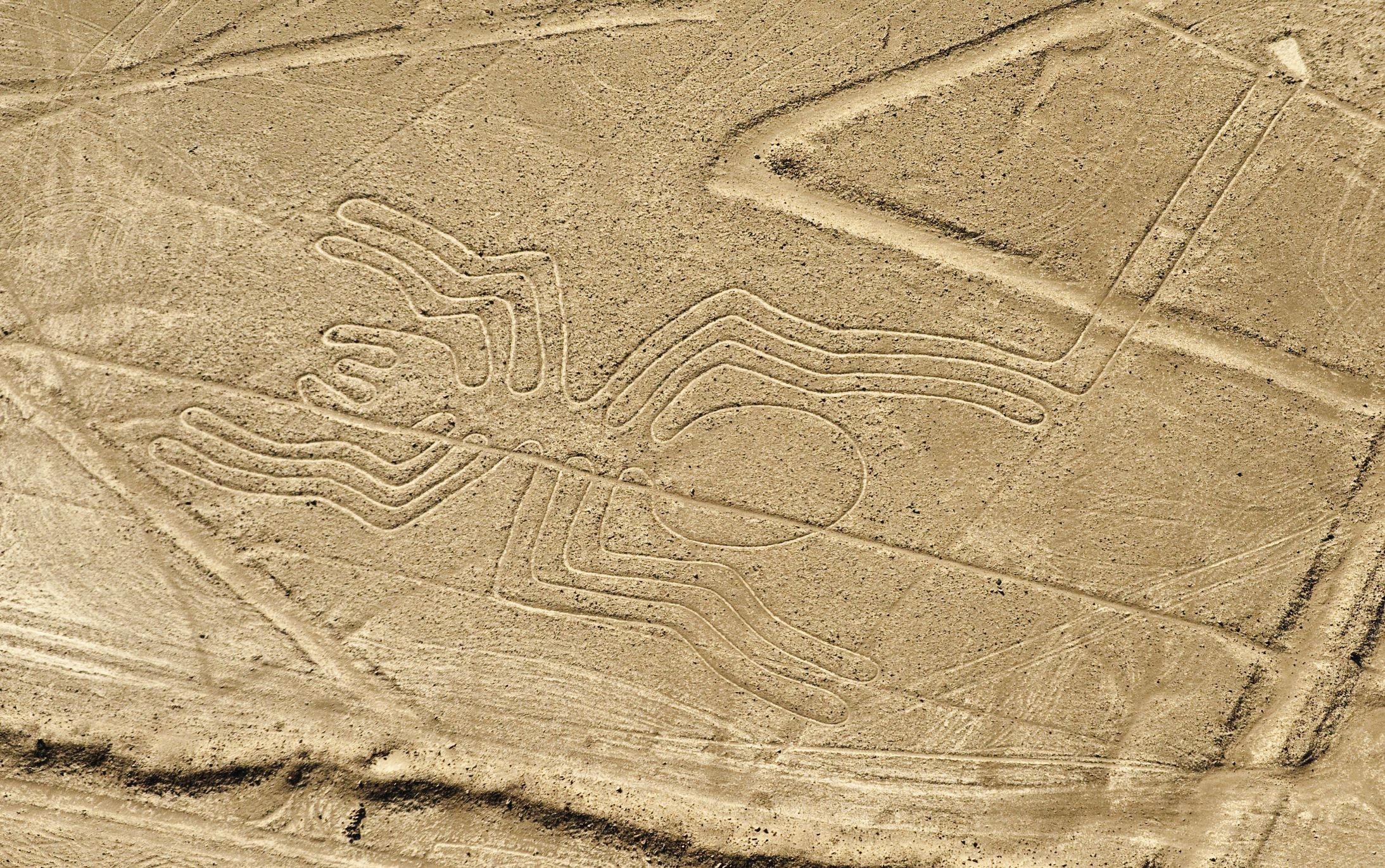
There’s yet another example that the zoomorphic lines were drawn in a different period of time than the geometric ones, and that would be the whale figure, where it is evident that the whale was drawn on top of the deeper line.
The lines that form the whale are visible on top of the deeper design, meaning that they were added afterward, otherwise, they would’ve been erased.
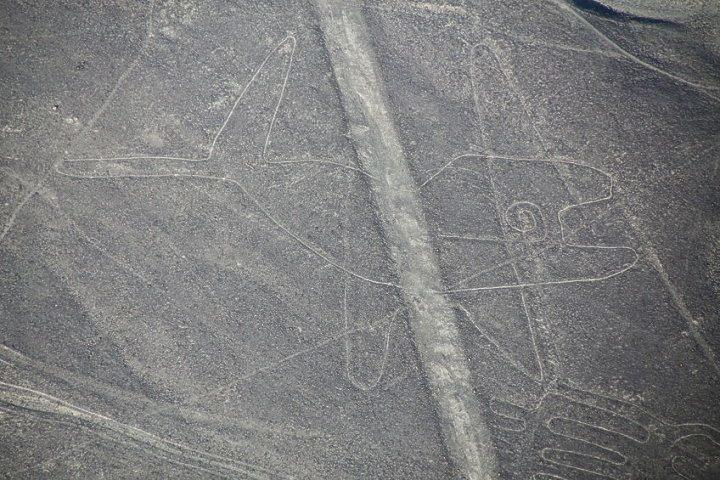
As a matter of fact, two Italian researchers, Nicola Masini and Giuseppe Orefici have demonstrated how the geometric figures are correlated to the temples and the pyramids at Cahuachi, while the other figures are not.
With the aid of aerial and satellite remote sensing techniques, the Italian researchers detected and analyzed five groups of geoglyphs, each characterized by distinct motifs, patterns, and functions.
The most significant is characterized by meandering or zigzag motifs with a clear ceremonial function, crossed by trapezoids and lines that converge towards the pyramids of Cahuachi.
A probable solar calendar function is attributable to some geoglyphs consisting of geometric figures, lines, and radial centers aligned towards the solstices and equinoxes.
The geometric lines were also the most difficult to make, as they show little to no error, are perfectly straight, and some of them go through significant territorial changes without altering their course. For instance, some of them start from the top of a mountain, go through slopes, ravines, and gorges, and maintain their incredibly straight course throughout the whole length.
On the other hand, the animal and anthropomorphic figures are not subject to those dramatic changes, show no astronomic alignments, and some of them have margins of error, even if very little. Almost all of them were made on the actual plain, making them much easier to obtain than the geometric patterns.
Even though the most fascinating and enigmatic figure might be “The Astronaut”, the most mysterious of the lines is actually a geometric one that was made by artificially removing the top of a mountain, making it flat.
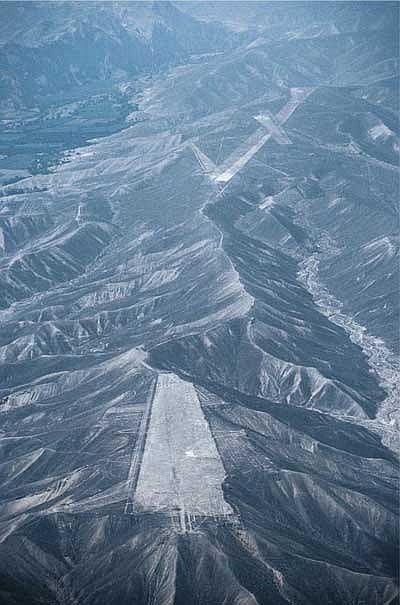
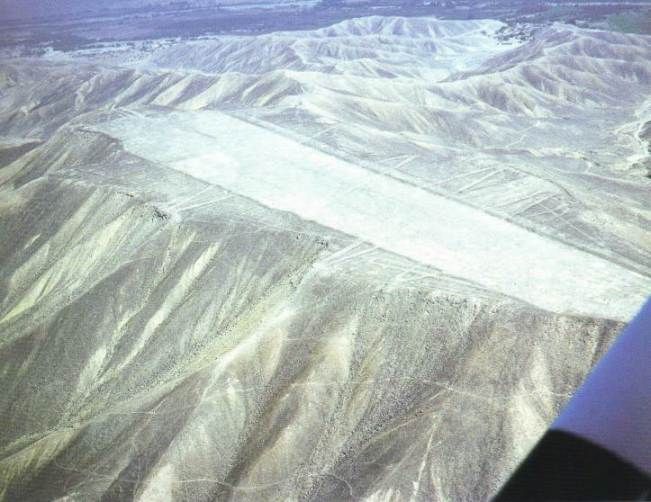
Under this large, incredibly complex line is a zig-zag pattern that is even more enigmatic than the above pattern.
Electromagnetic Fields
One of the most surprising features about the Nazca Lines is that they possess strong magnetic and electric fields.
This is easily proven by stepping in and outside the lines with an electromagnetic tester.
The intriguing part is that sand actually acts as an electricity isolator, making it really unlikely to find electric and magnetic fields in the desert.
However, as soon as you step inside a pattern the electromagnetic tester would suddenly spike up.
